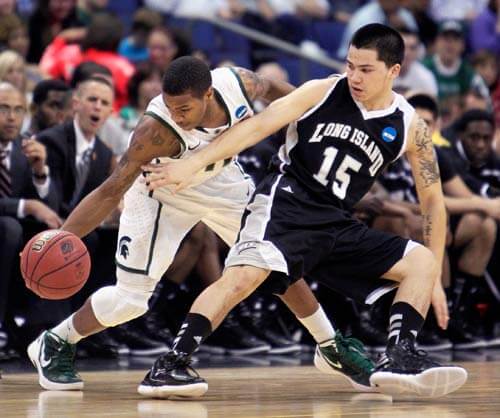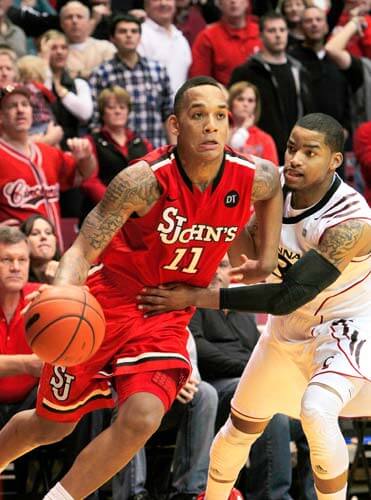Autumn is here and along with it the school athletic season. By playing football, hockey, basketball, soccer, or just in the playground, children and young adults are testing their athletic skills. Yet, they are also risking head injury, an injury which research shows can have serious health consequences. And now a new study reveals that sports related head injuries among children and teens have been increasing significantly over the last decade.
The Centers for Disease Control and Prevention (CDC) study looked at the rate of traumatic brain injuries (TBI’s), including concussions, seen by hospital emergency departments over a ten year period. The results show that among people under age 20, the rate of TBI’s from sports and other recreational activities increased 60%. The greatest numbers of hospital visits were caused by bicycling, football, basketball, soccer and playground activities.
According to the CDC, seven out of ten TBI’s were among males, most of whom where playing football or bicycling. Young women suffered head injury from playing soccer or bicycling. Most of all those injured were between the ages 10-19. Younger children, under age 9, tended to suffer from bike or playground injuries.
The study follows another published in Clinical Pediatrics showing that youth football injuries have also increased. The number of injuries among players aged 6-17 increased over 27%, with older players more likely to get concussions.
Research shows that traumatic brain injuries can take a toll at an early age. In January of 2009, a Boston University Center for the Study of Traumatic Encephalopathy (CSTE) showed the brain of a recently deceased 18-year-old high school football player had early signs of motor neuron disease from head trauma he received playing football.
And it is young athletes who require more time to recover from traumatic brain injuries.
“While some research shows a child’s developing brain can be resilient, it is also known to be more vulnerable to the chemical changes that occur following a TBI,” said Richard Hunt, M.D., director of the CDC’s Division for Injury Response.
However, the CDC believes the increase in traumatic brain injuries is not all bad news.
“We believe that one reason for the increase in emergency department visits among children and adolescents may be a result of the growing awareness among parents and coaches, and the public as a whole, about the need for individuals with a suspected TBI to be seen by a health care professional,” said Linda Degutis, of the CDC’s Center for Injury Prevention and Control.
That awareness likely increased after studies and media reports publicized the long-term effects of traumatic brain injury among those playing professional sports. BU’s Center for the Study of Traumatic Encephalopathy has been studying just those effects. Their research show it to be associated with motor neuron disease, a condition that effects voluntary muscle movements. The most common motor neuron disease is amyotrophic lateral sclerosis (ALS), or Lou Gehrig’s disease. Those findings were published in the September 2010 issue of The Journal of Neuropathology and Experimental Neurology.
“When we read reports about cases of the disease being linked to specific activities or experiences, such as the increased risk associated with military service, or this one regarding professional athletes, we are reminded of just how complex of a disorder ALS is.” said Steve Perrin, PhD and Chief Scientific Officer of the ALS Therapy Development Institute.
Those TBI complications made headlines after the shocking suicide last February of former football star Dave Duerson. Duerson, who played NFL football for 11 seasons, shot himself in the heart so that his brain could be studied to confirm that he was suffered lifelong problems due to football related TBI’s.
Research continues to show the problem is not exclusive to the gridiron, hockey players are suffering from the same TBI fate. Just last month, CSTE published a postmortem study showing a third NHL player, all-star Ricky Martin, suffered from a TBI caused brain disorder. Martin was the first hockey player who seldom engaged in on-ice fighting to show these effects.
Not wanting to be seen as exploiting the long-term health of their athletes for short-term profits some professional sports are responding to the problem. The NFL has tightened on-field rules to better protect players. However, any decrease in traumatic brain injuries in more traditional sports could be offset by the growing popularity of other risky sports such as ultimate fighting.
Sidebar: Know Concussions
Traumatic brain injuries are very common in children and adolescents playing sports. A concussion is a type of traumatic brain injury (TBI) caused by a bump, blow, or jolt to the head that causes the brain to move rapidly inside the skull. Even what seems to be a mild bump or blow to the head can be serious. Concussions can result from a fall or from players colliding with each other or other obstacles.
The CDC notes that it’s important for coaches to become familiar with the signs and symptoms of a concussion so that they can respond appropriately. Coaches should be alert for any athletes who experience a forceful blow to the head or body that results in rapid movement of the head and changes in an athlete’s behavior, thinking or physical functioning.
Symptoms include:
~Nausea or vomiting (early on)
~Difficulty concentrating or remembering new information
~Headaches, dizziness, fuzzy or blurred vision, sensitivity to noise or light
~Balance problems
~Mood irritability, nervousness or anxiety
~Sleeping more than usual, less than usual, trouble falling asleep, fatigue
Recovery
Most people can recover fully from a concussion. But for people who have suffered from multiple head traumas, problems may last a lifetime. In general, recovery may be slower among older adults, young children, and teens. Recovery from additional concussions often takes longer than recovery from the first.
Courtesy Healthy Living News
























